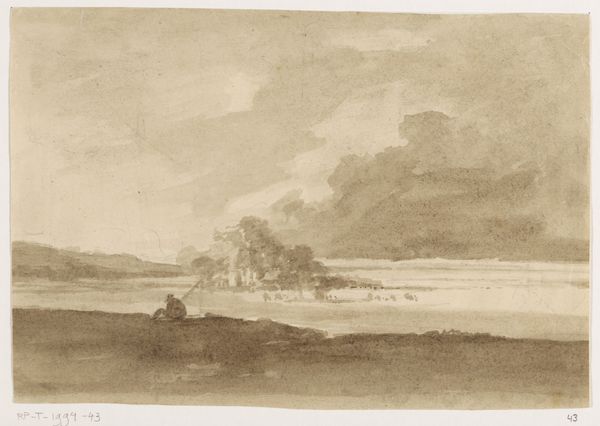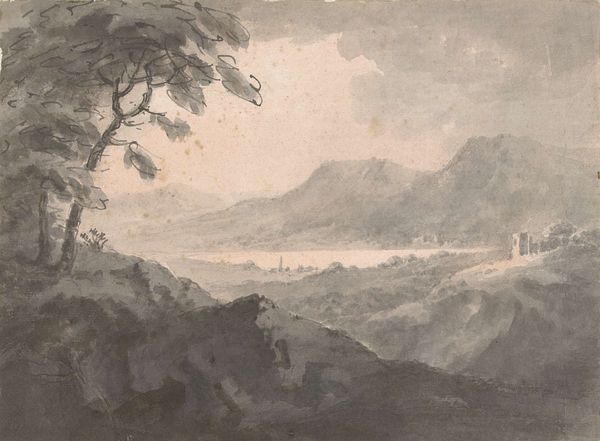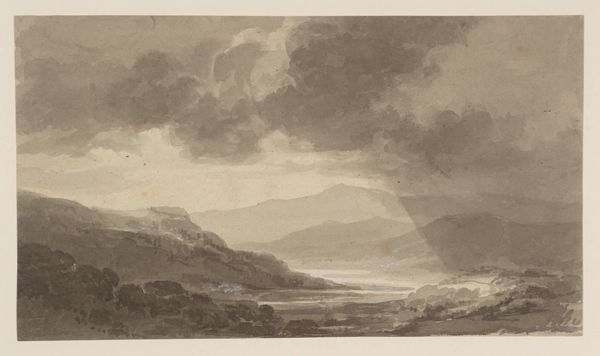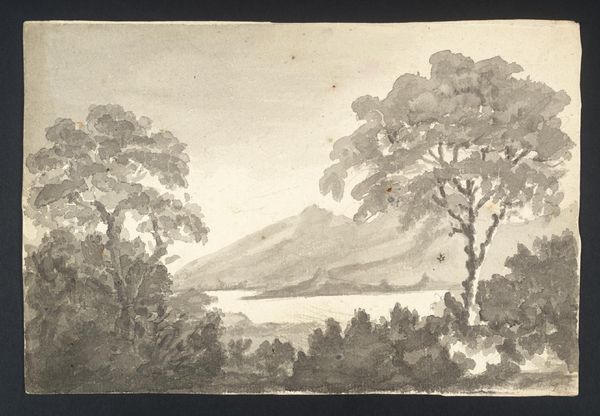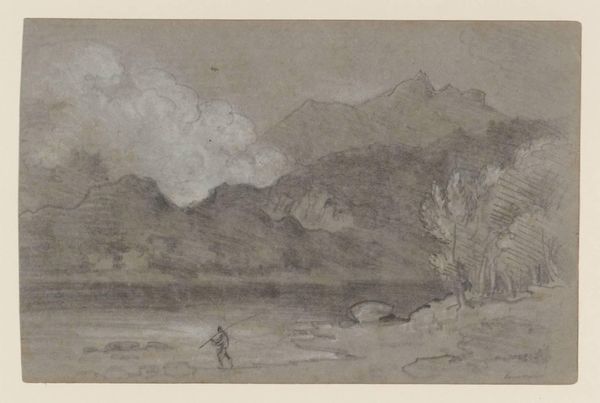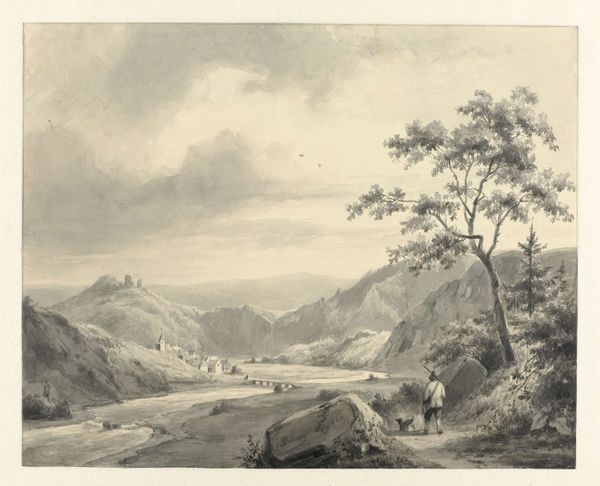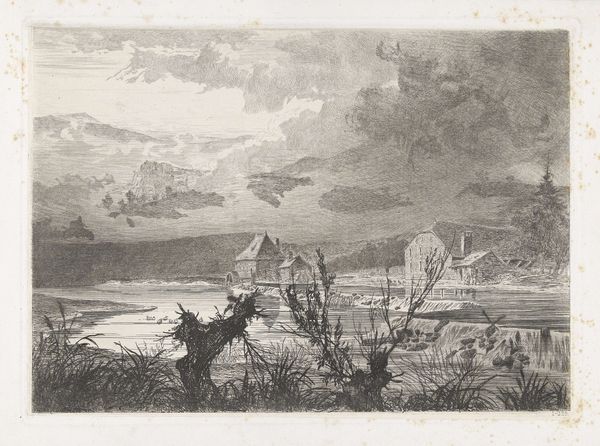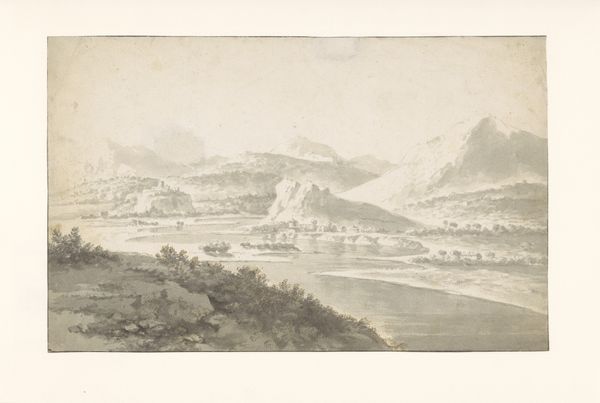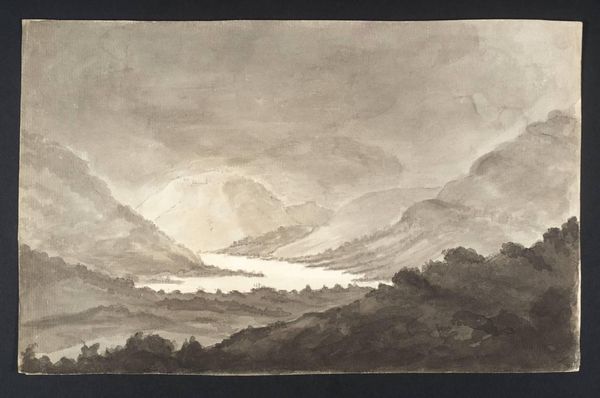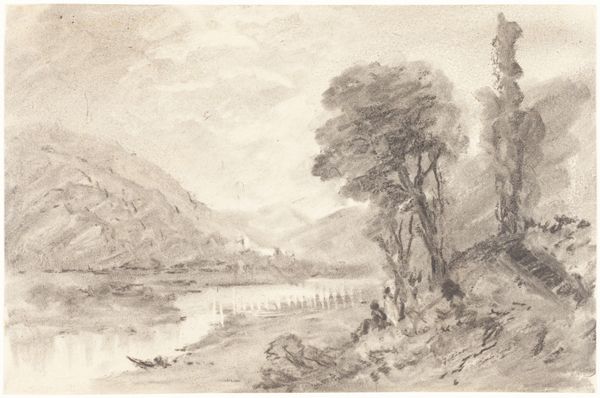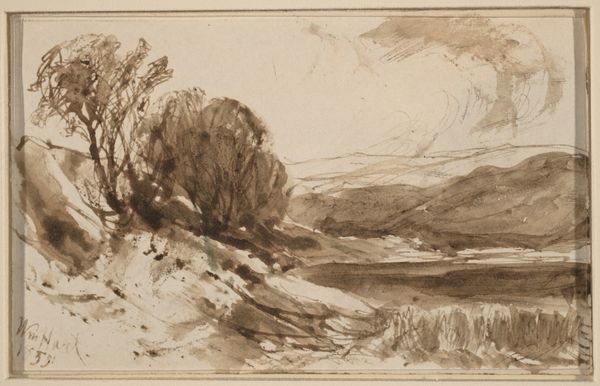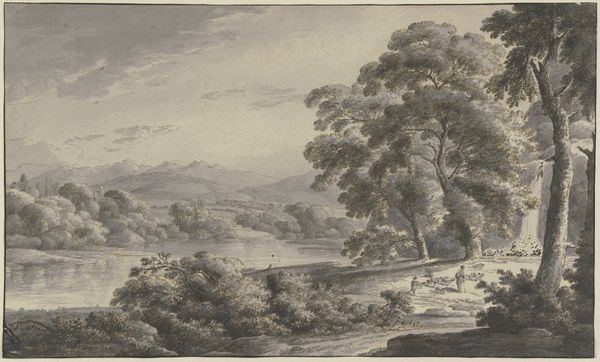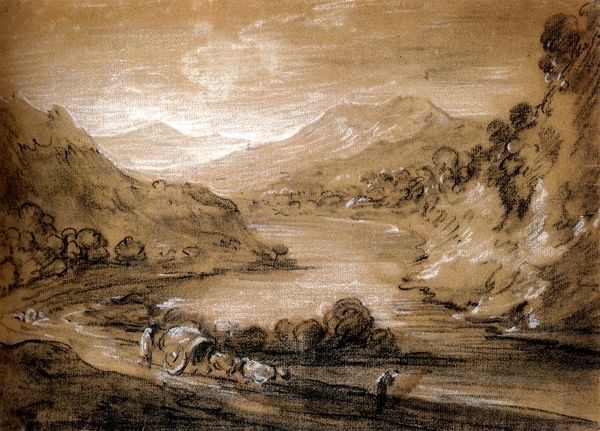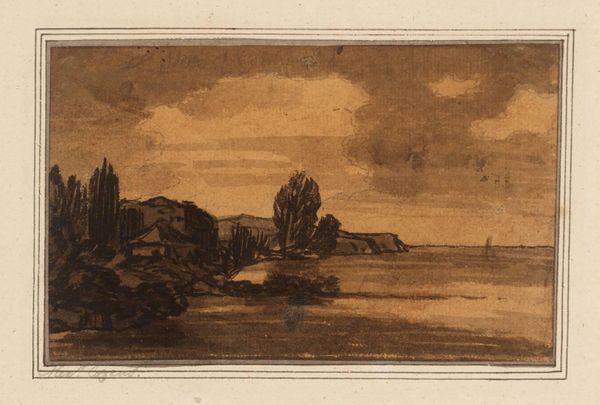
Dimensions: support: 83 x 164 mm
Copyright: CC-BY-NC-ND 4.0 DEED, Photo: Tate
Curator: Looking at this landscape, it feels like a memory fading—soft edges, muted tones. There's something quite melancholic about it. Editor: This is "Landscape, a River between Hills" by Rev. William Gilpin, held here at the Tate. Gilpin, who lived from 1724 to 1804, was quite influential in developing the idea of the picturesque, you know, that specifically English ideal of landscape beauty. Curator: Ah, yes, I see that! The way the hills frame the river, like a stage set. It's all carefully composed, isn't it? As if nature itself needs a bit of arranging to be properly appreciated. Editor: Exactly! And note how the figures are placed within the landscape, almost as observers themselves, reinforcing this idea of viewing and appreciating nature from a distance. Curator: But that distance, that's what gets me. It feels like there's something being held back, a story untold. Maybe it's the lack of vibrant colors, but I feel a certain stillness in it. Editor: Perhaps, but it's important to remember Gilpin's time. Landscape wasn't just about scenery; it was about national identity, about what it meant to be English. Curator: True, true. Still, I can't shake the feeling that the most interesting part of this piece is what it leaves unsaid. Editor: Indeed. It’s a window onto a particular way of seeing, both beautiful and, perhaps, a little restricting.
